Brazil National Museum fire: Key treasures at risk
- Published
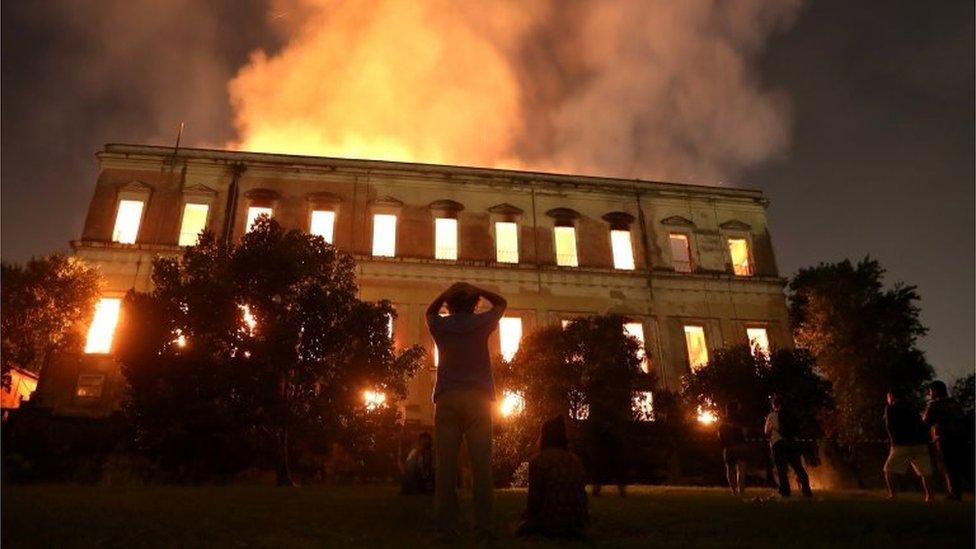
The National Museum contained 20 million artefacts, many of which are feared destroyed
The National Museum of Brazil in Rio de Janeiro is a treasure trove which contains more than 20 million scientific and historical items.
A massive fire spread through the 200-year-old institution on Sunday engulfing almost all of its rooms and gutting large parts of the building.
Most of its priceless collection is thought to have been burnt. BBC News takes a look at some of the museum's most treasured items. It is not yet clear if they are among those destroyed.
1. Luzia


The museum was home to Luzia, the oldest human remains to be found in the Americas

The museum was home to Luzia, the nickname given to what are thought to be the oldest human remains found in the Americas.
The remains were found in a cave in 1975 in in the state of Minas Gerais, north of Rio, by French archaeologist Annette Laming-Emperaire.
Tests suggest the skull and bones belonged to a woman in her 20s who was just under five feet tall (1.5m). They are estimated to be 11,500 years old.
2. Bendegó

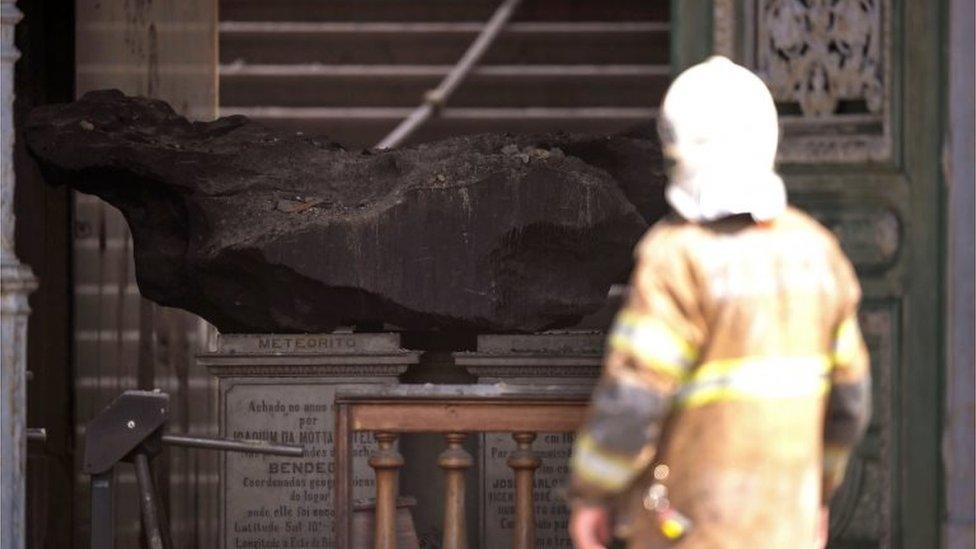
The National Museum's Bendegó meteorite, after the fire

The largest iron meteorite to be found in Brazil. Weighing 5,260kg (11,600lb) it was found by a boy looking for a lost cow in the state of Bahía in north-east Brazil in 1784.
Transporting the meteorite turned out to be a major endeavour. An attempt to move it in 1785 by a cart pulled by 20 pairs of oxen ended in disaster when the cart ran out of control down a hill and landed in the bed of a stream.
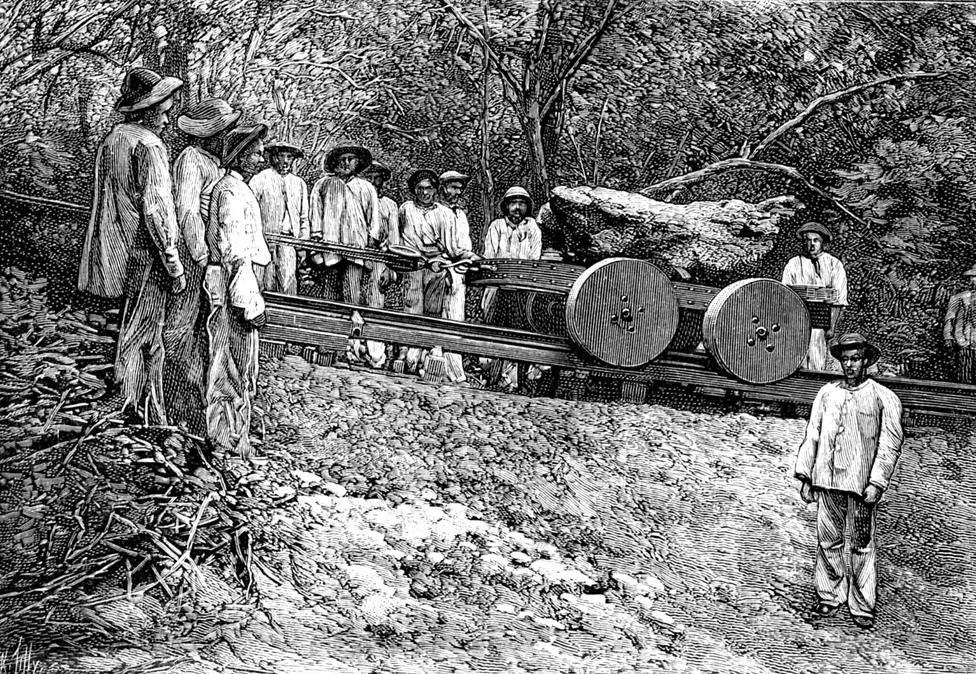
Moving the Bendegó meteorite from where it fell in Bahía to Rio did not prove easy
The meteorite was not recovered until more than a century later when a retired Brazilian naval officer was put in charge of getting it to Rio.
It finally arrived in the National Museum in 1888 after a long journey by specially built cart, rail and ship.
Partly due to its size and partly to its laborious transportation to Rio, the meteorite became famous beyond Brazil and in 1889 a wood reproduction was exhibited at the Universal Exposition in Paris.
3. Maxakalisaurus
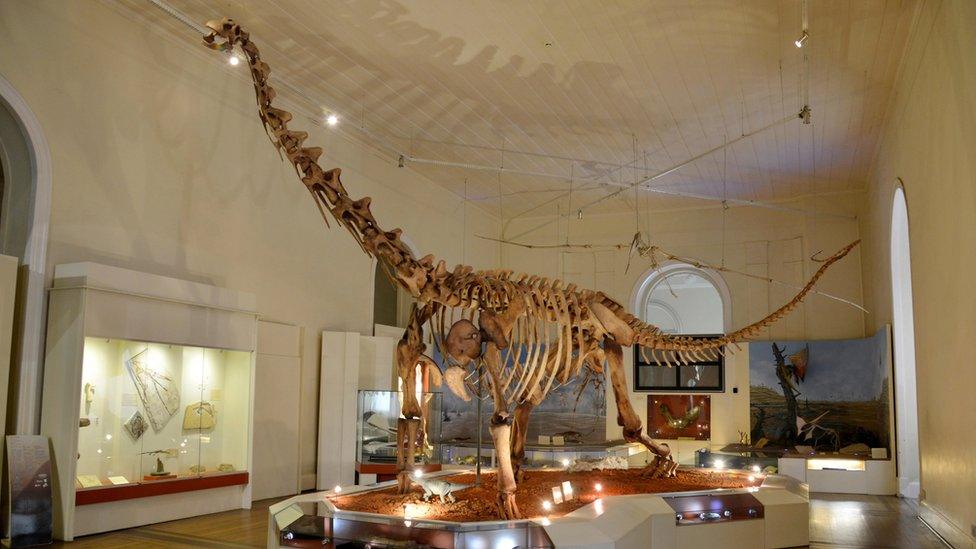
The reconstructed skeleton of a Maxakalisaurus was the biggest dinosaur on display in the museum
The reconstructed skeleton of a Maxakalisaurus was the biggest dinosaur on display at the National Museum in Rio.
Parts of the skeleton of a Maxakalisaurus were found in Minas Gerais in 1998.
The plant-eating giant lived 80 million years ago in the area now occupied by Brazil. A million people came to see the display, according to museum figures.
The room housing the 13m-long (44ft) skeleton had just re-opened in July after termites ate through the base on which the Maxakalisaurus stood.
The museum had resorted to crowd-funding to repair the damage.
4. Pompeii fresco

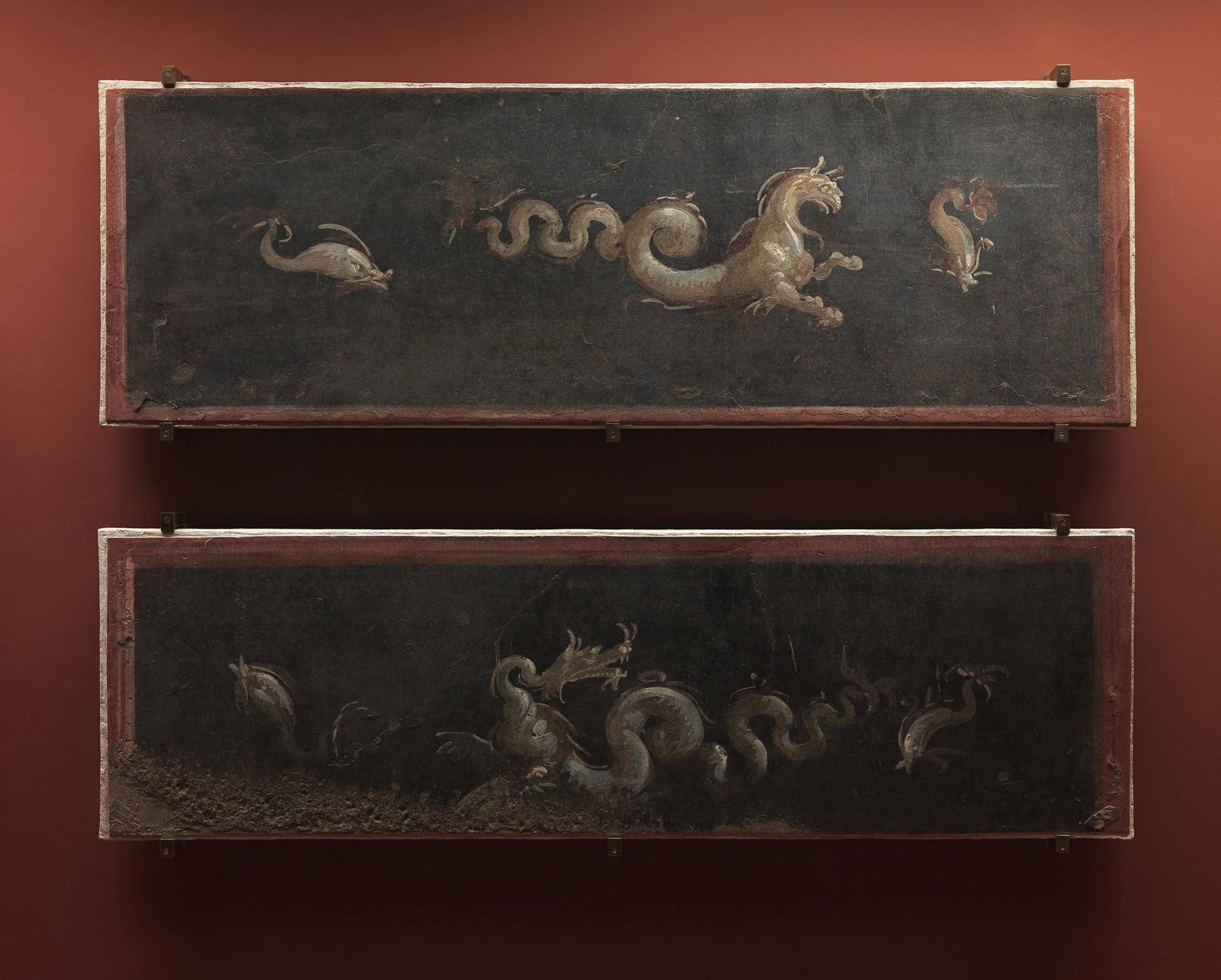
The frescoes survived the eruption of Mount Vesuvius

A Roman fresco from the ancient city of Pompeii was one of the star exhibits of the museum's Greco-Roman collection.
The fresco had survived the eruption of Mount Vesuvius in the year 79AD.
5. Pre-Columbian artefacts
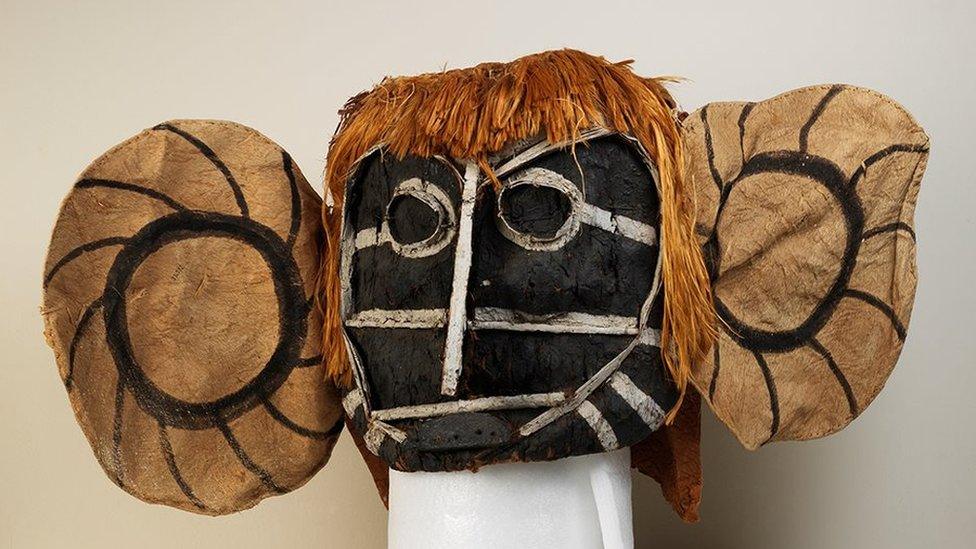
Indigenous masks are among the many Brazilian artefacts on display
The archaeological section of the museum held more than 100,000 objects with a priceless collection of Brazilian artefacts dating back to pre-Columbian times.
Funerary urns, Andean mummies, textiles and ceramics from across Latin America were also gathered throughout the 19th Century to be studied and displayed in the museum.
Some of the items on display came from the personal collection of Emperor Pedro II of Brazil.
6. The building itself
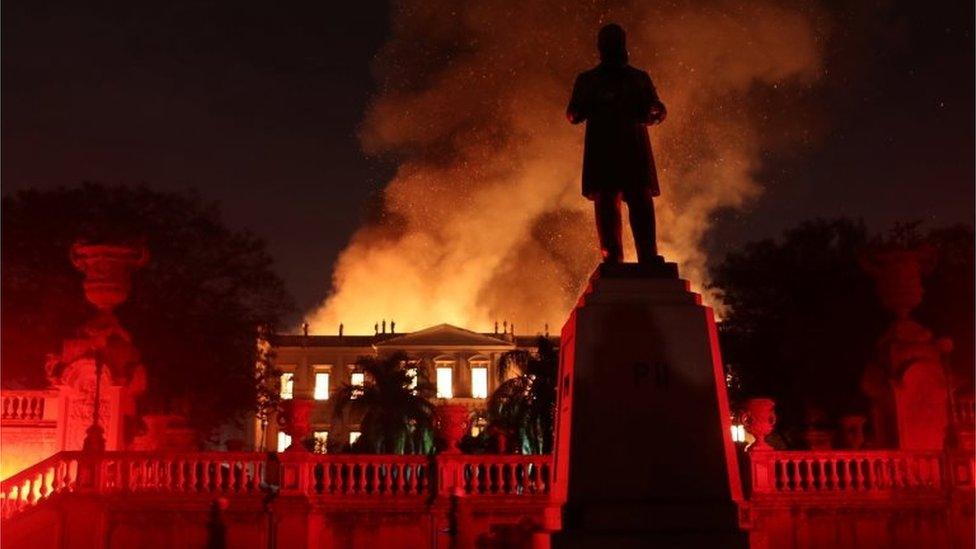
The museum is housed in a former palace which during colonial times was the official residence of the Portuguese royal family.
The building in its current form dates back to the early 19th Century when a rich merchant donated it to the Portuguese royal family, which extended the manor house and turned it into the neoclassical São Cristóvão palace.
After Brazil became independent from Portugal, the palace became the residence of Brazil's Emperor Pedro I.
Pedro I's son, Pedro II, was born in the palace in 1825 and grew up there. The imperial family left the country after Brazil became a republic in 1889.
In 1892, the National Museum of Rio de Janeiro, itself founded in 1818, moved into the palace.
Millions of people have since visited its vast exhibits on anthropology, archaeology and natural history.
- Published3 September 2018
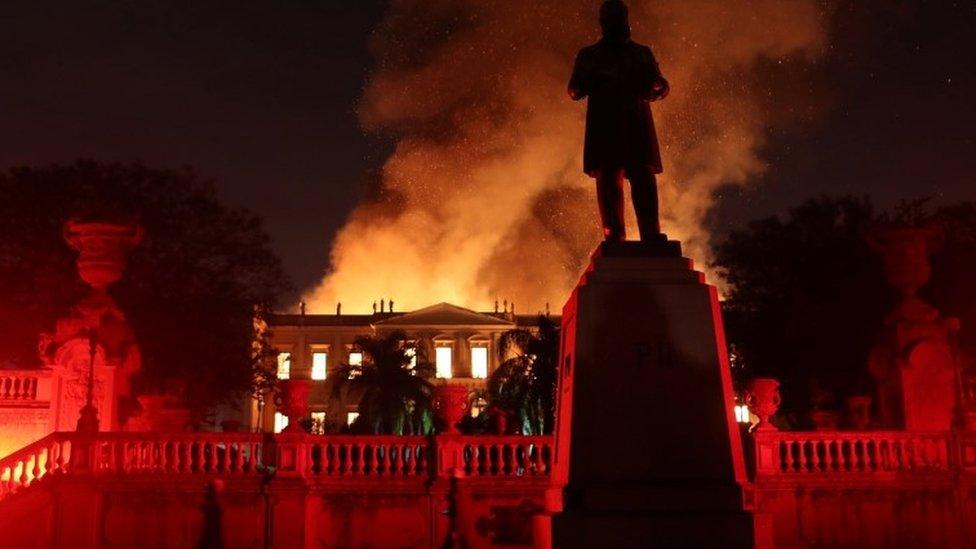
- Published3 September 2018